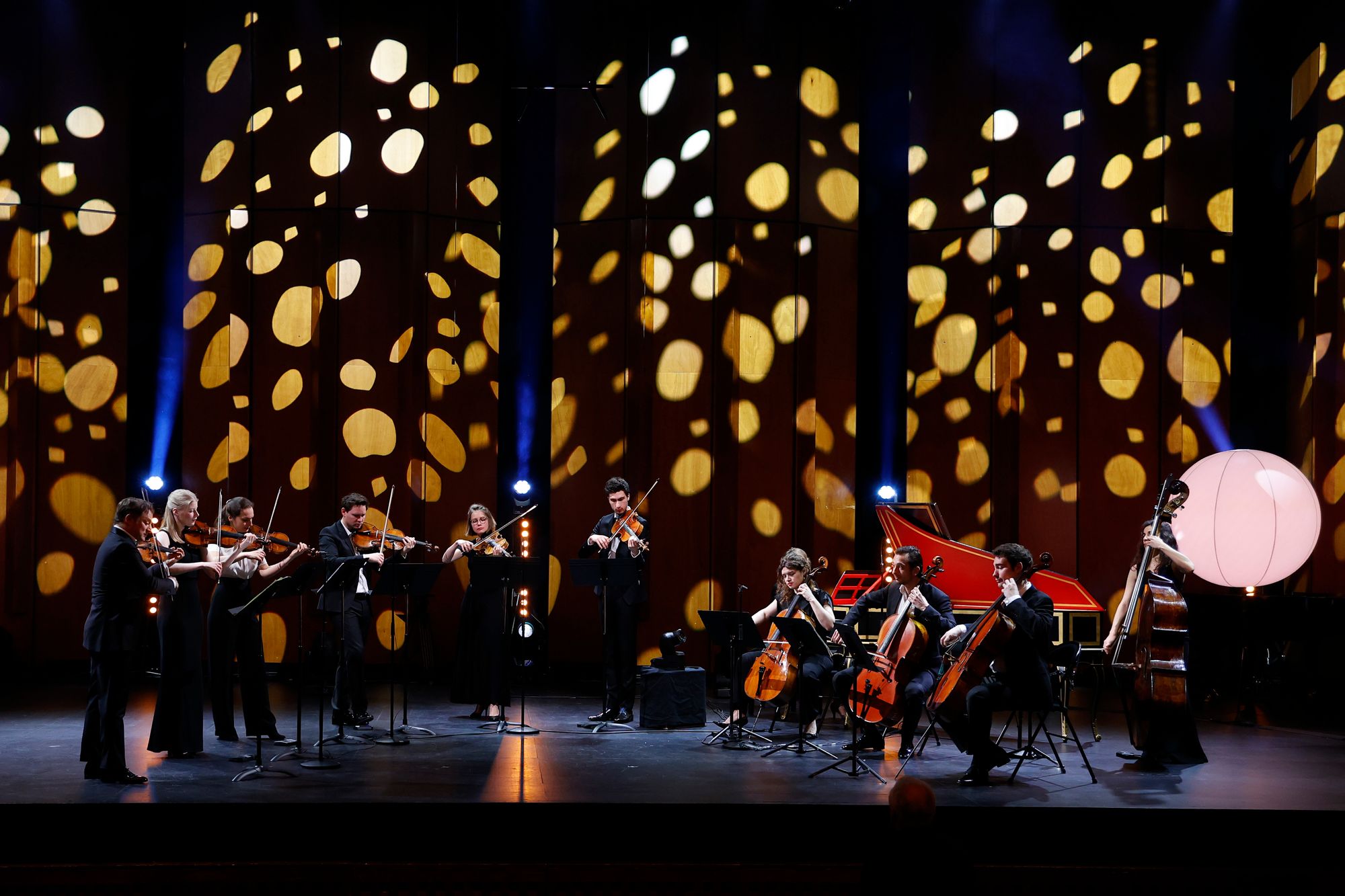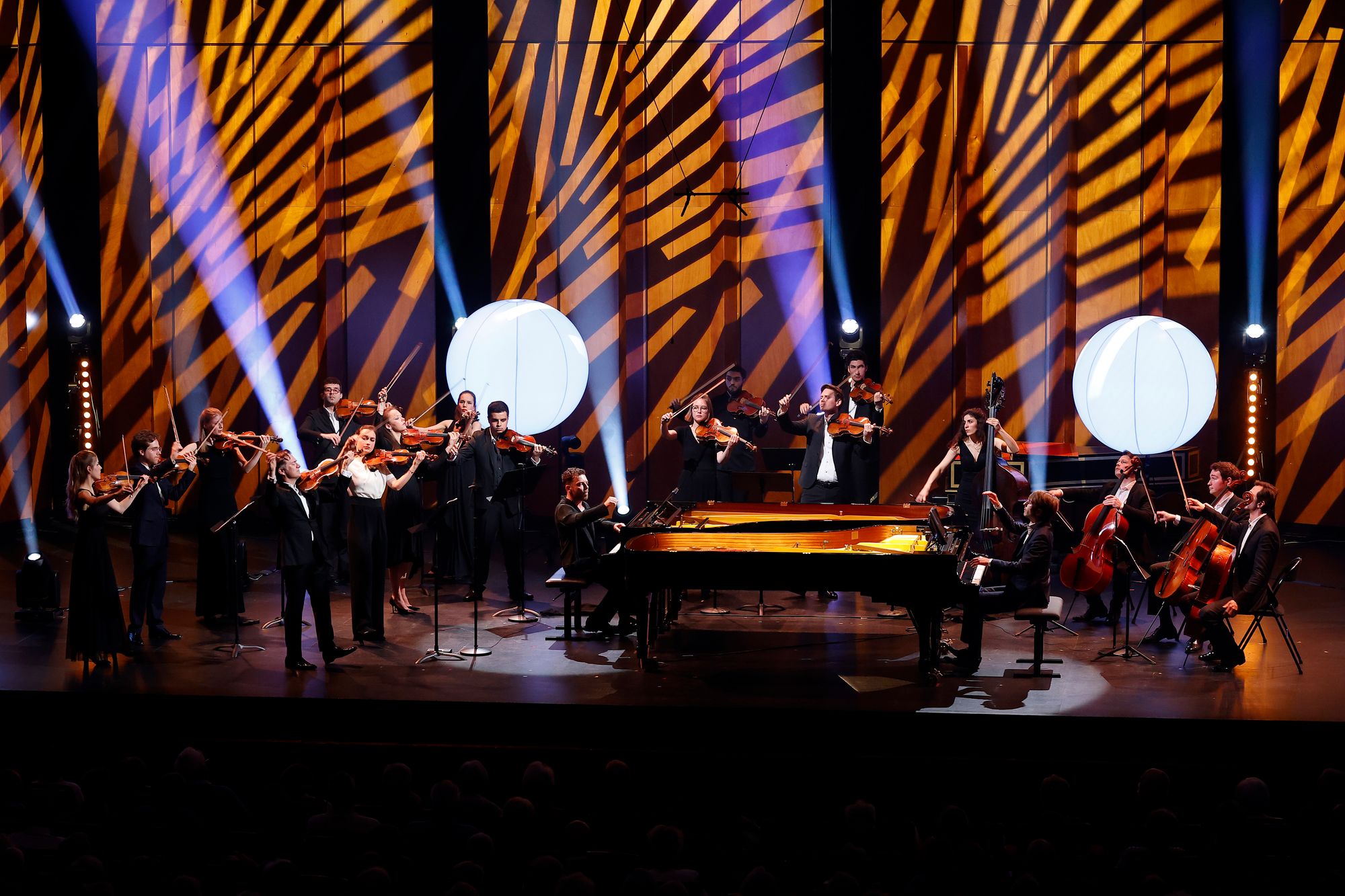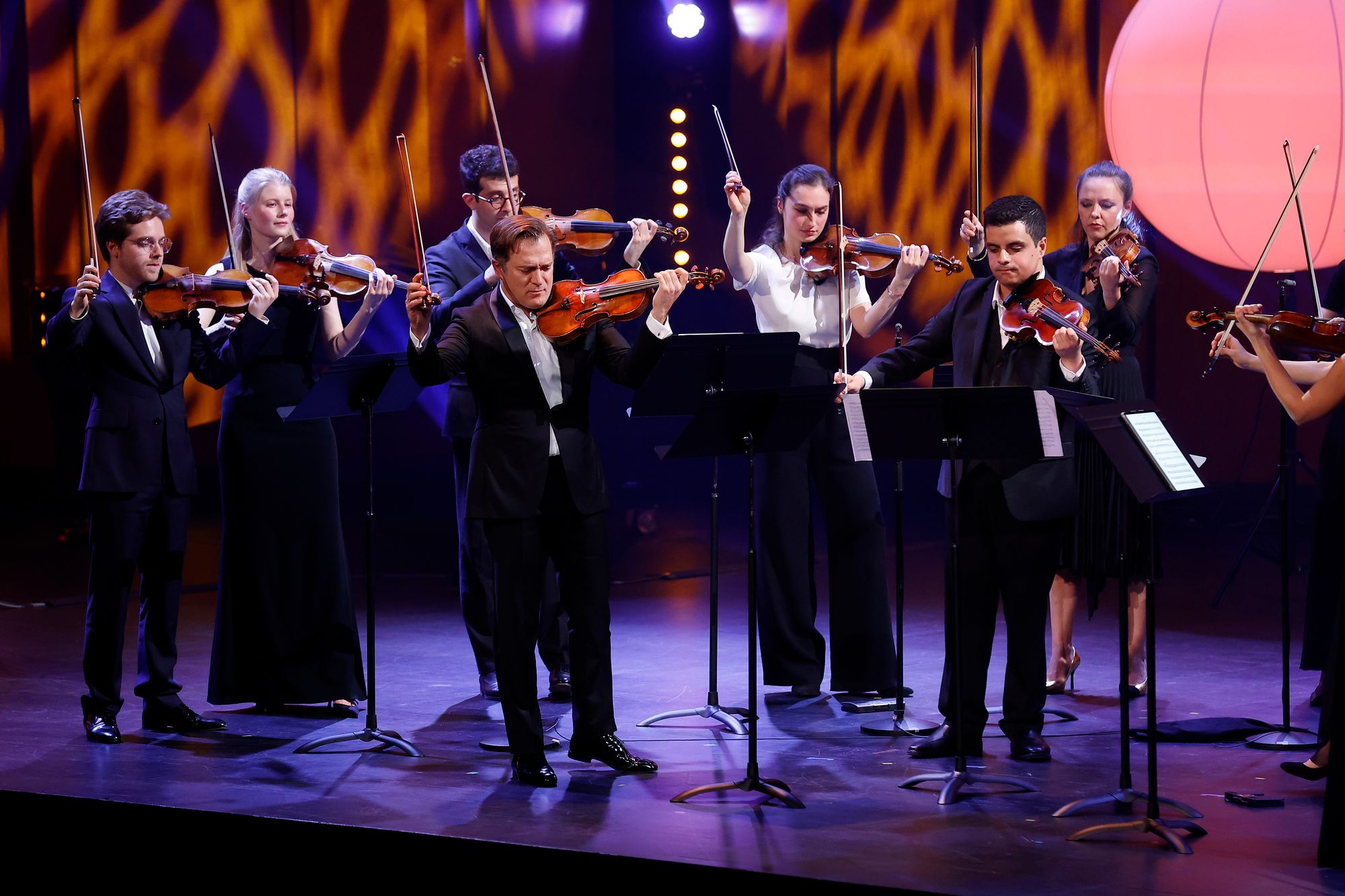Génération @ Aix: Carte Blanche à Renaud Capuçon

Génération @ Aix: Carte Blanche à Renaud Capuçon Members of Génération @ Aix; Renaud Capuçon (violin / director). Grand Théâtre de Provence, Aix-en-Provence, 16.04.2023
Bach Brandenburg Concerto No. 3 in G, BWV 1048 (1721)
Sollima Violoncelles vibrez (version for six cellos, 1993)
Bach Concerto for two Keyboards in C, BWV 1060 (1730s?)
Vivaldi Concerto for Four Violins, RV 549 / Op. 3/1 (1711)
Concerto for Two Violin and Strings in A minor, RV 522 (1711)
Concerto for Four Violins and strings, RV 580 (1711)
Celebrating the tenth anniversary of the Festival de Pâques at Aix-en-Provence, this was a remarkable acknowledgement of the forest of talent that is the Generation @ Aix scheme, which has offered opportunities to numerous young artists since 2013. The festival describes the scheme in these terms: ‘Each year, the Génération @ Aix concert is a highlight for festival-goers as it showcases promising young musicians, who are destined for greatness, such as the cellists Edgar Moreau and Bruno Philippe or the viola player Adrien La Marca, all of whom got their start here. Génération @ Aix aims to bring exceptional young talent together with internationally established musicians.'
And so it was at the Grand Théâtre de Provence in a final event led by Renaud Capuçon. Some names in the line-up are already familiar: Alexandra Conunova, for example, played in Beethoven’s Triple Concerto in Paris here (where she was also joined by another of the participants, pianist David Kadouch) and here (where the pianist was Elisabeth Brauss).
This programme of Baroque music, with an insert of a piece by Giovanni Sollima (born 1962) was perfect fare for 5pm on a gloriously sunny Sunday afternoon. Familiar are to start, though with the collective concerto that is Bach’s Third Brandenburg Concerto, the shortest of the six. Wonderful to hear Capuçon in the solo passages of course, and to hear how well he interacted with his colleagues; most impressive, though, was the overall balance and sound of the ensemble, and how they played together with a telepathic sense of ensemble. As Bach splits the ensemble into duos as well as solos, it became obvious that here were nine string players, each of impeccable taste and style, providing the very essence of chamber music. The ‘slow movement’ was left at the Phrygian cadence Bach gives; the finale was positively bursting with invention, themes surfacing unstoppably. Bach’s harmonic plan was honoured to the letter, so the ratcheting up of tension balanced perfectly with plateaux that seemed as if suspended, so light was their delivery. A glorious start.
The shift to Giovanni Sollima’s 1993 piece, Violoncelles vibrez! was stark indeed. A single repeated note seems charged with power and it is immediately obvious we are in a different world. Two solo cellos – again equally matched, here Edgar Moreau and Julia Hagen– along with a ’tuttti’ of six other cellos. The two soloists frequently take the same or equivalent gesture and echo each other, s that equivalence is vital to the success of the performance. Listening to some other available performances, this Aix account seemed a little blunted; one came away with the impression of a piece that was ’nice' as opposed to vibrant, and the return of the opening towards the end, after all the fervid activity, lost some of its emotional heft. All credit to the soloists, but the overall impression was of music dwarfed in stature by the music around it. If the piece is unfamiliar to you, you might want to try this version by the cellists of the Singapore Symphony Orchestra:

The Bach Concerto for Two Keyboards was played on two facing full Steinway concert grands by Guillaume Bellom and David Kadouch. Strings were 5:4;4: 3:1, with double-bass Lorraine Campet enthusiastically providing the firmest of foundations. If the overall sound from the strings was a bit soupy in the first movement, Bellom it was who launched the central Largo ovvero Adagio with a silken legato line; as that line blossomed through interaction between the pianos, the music seemed to open out miraculously. The movement closed with the sound of piano haloed by strings; how strong the contrast to the resolute onward staccato motion of the finale (Kadouch possibly a touch more assertive than Bellom in his delivery). The lovely, rich final chord from the pianists sealed the deal; the strings in the outer movements played with a delicious edge to the attack, perfect for this piece. A life-enhancing performance, and perfect to lead us into the interval.
Fast-forward half an hour and a trio of Vivaldi pieces awaited. Firstly, the Concerto in D, RV 549 (given in the progamme as ’Concerto grosso’), delicate in its opening but full of incident in its opening Allegro (the use of a drone over which violins ‘riff‘ is particularly noteworthy). Fine work from all four violin soloists: Cosima .Soulez Larivière, Emmanuel Coppey, Bilal Althnemr and Raphaëlle Moreau. Nice programming too, as this balanced nicely with the concluding Concerto for Four Violins, RV 580.
For the intervening Double Concerto in A-Minor, RV 522, it was Cornunova and Eva Zavaro who relished the somewhat dark power of the first movement. Conunova’s violin sang beautifully iat the opening of the central Larghetto e spiritoso, joined soon by intertwining lines from Zavaro; moments of perfect peace, underscored by a simple, lower string line from the ripieno, creating utterly fragile music. Pianissimos held the packed hall to silence; the finale could hardly have been more different, suffused with adrenalin. It is a wild ride that demands much of the soloists; Zavaro’s long lines with Conunova’s energetic tremolos a highlight.

Finally, the famous Concerto for Four Violins, RV 580: Capuçon, Mohamed Hiber, Manon Galy and Raphaëlle Moreau (at times the imitation extends to a solo cello. here the excellent Yan Levionnois). Mohammed Hiber in particular showed the perfect balance of impeccable technique with Vivaldian style. The opening tutti chords of the central Largo made quite a mark in the venue itself (less so in the arte.tv relay); and the violin’s imitations of the ensuing upward phrase exuded both strength adn integrity. This is a fascinating movement: a passage of pure harmony over repeated chords came across as proto-Minimalist, while the finale presented not only four equal soloists but four individual but complementary personalities within that. A truly terrific performance.
Small wonder the audience went nuts after it. The encore was Peter Heidrich’s Variations on ‘Happy Birthday’, with variations that offered a homage to Haydn, a homage to Beethoven, a variation in the Hungarian style, a variation referencing film music, one in the style of Wagner. It is a fabulous, compositionally virtuoso piece, playful (a Haydn Minuetto and Trio, a Strauss family waltz), but fully capable of a minore variation and that Wahner (Siegfried Idyll) plus a quick trip to South America (with Kadouch and Bellom adding a nice piano four-hands touch). A quick cadenza for Capuçon, including a Rückblick to the 1990’s for the (in)famous Nokia ringtone on violin, led to that hongroise that set the audience all a-clap until the inevitable headlong accelerando towards the final chords.
What a way to celebrate (the encore was followed by explosions of gold confetti and he audience was invited for free champagne afterwards).
The concert is at the time of writing available for free viewing at arte.tv at this link.
The 2023 Festival de Pâques is dedicated to the memory of pianist Nicholas Angelich (1970-2022).
Full list of performers: Renaud Capuçon, Alexandra Cornunova, Bilai Alnemr, Emmanuel Coppey, Mohamed Hiber, Manon Galy, Raphaëlle Moreau, Cosima Soulez Larivière, Eva Zavaro, violins; Léa Hennino, Adrien La Larca, Manuel Viaque-Judde, Paul Zientara, violas; Julia Hagen, Olivia Gay, Florian Pons (replacing an indisposed Anastasia Kobekina), Yan Levionnois, Edgar Moreau, Aurélien Pascal, Bruno Philippe, Maxime Quennesson, cellos; Lorraine Campet, double-bass; Céline Frisch, harpsichord; Guillaime Bellom, David Kadouch, pianos.
All photos © Caroline Doutre
